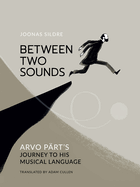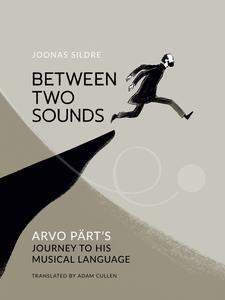
 Arvo Pärt is arguably the most performed living composer in the world. Estonian cartoonist Joonas Sildre worked closely with his renowned compatriot to create Between Two Sounds: Arvo Pärt's Journey to His Musical Language, a gorgeous graphic title depicting Pärt's life, from his 1935 birth to his musical transformations, and ending with his family's 1980 departure from their native Estonia. Sildre's meticulous, borderless panels--in black, white, and shades of greenish-grey--are accompanied by Adam Cullen's succinct, lucid translation from the Estonian.
Arvo Pärt is arguably the most performed living composer in the world. Estonian cartoonist Joonas Sildre worked closely with his renowned compatriot to create Between Two Sounds: Arvo Pärt's Journey to His Musical Language, a gorgeous graphic title depicting Pärt's life, from his 1935 birth to his musical transformations, and ending with his family's 1980 departure from their native Estonia. Sildre's meticulous, borderless panels--in black, white, and shades of greenish-grey--are accompanied by Adam Cullen's succinct, lucid translation from the Estonian.
At age three, Pärt surprises his mother with his beautiful singing. Moving into his stepfather's home in 1939 gives him access to a piano. His mother places him in a children's music school in 1945. By 1949, he announces his intention to become a composer, but "a different kind!" His formal musical education continues, but he consistently strains against institutional expectations and restrictions, exacerbated by the Soviet occupation of Estonia.
Pärt's compositions are considered so modern and avant-garde--"no one in Estonia or the entire Soviet Union has composed using the dodecaphonic technique"--as to place himself in danger: "Perhaps they'll declare you a dissident, an enemy of the people." Cleverly manipulating the system of political gatekeeping becomes a necessity; although dodecaphonic is deemed "bad," Pärt dodges the dissident label by dedicating the piece "to the victims of fascism," and the gatekeepers relent: "well, all right... it's a good piece." Sildre skillfully captures the seemingly ridiculous back-and-forth of incomprehensible judgment.
Pärt's 1968 composition, "Credo"--overtly religious, which he refuses to "disavow" as demanded by the Soviet Central Committee--engenders a "Silentium" during which Pärt turns inward, finds new love, recommits to Orthodox Christianity, and immerses himself in medieval texts, teachings, and chant. When he resumes composing in 1975, his goal is to "reach religion's core through my own essence," inspiring the invention of his distinct form, tintinnabuli: "It is a unique two-voice approach where the voices are so rigidly bound that they form an inseparable whole. 1+1=1." As Pärt's reputation--and audience--grows globally, he's deemed more threat than comrade, resulting in surveillance, violent intrusion, and the family's expulsion in January 1980 from Estonia. An epilogue-in-prose further details their exile.
Sildre brilliantly uses simple lines--presented in swirls, circles, empty musical staffs--to explicate, connect, and enhance Pärt's creative and emotional musical journeys, moving up, down, straight, corkscrew, around and around, and continuing off the pages. Sildre's art radiantly confirms Pärt will not be contained, spreading his music throughout the world. --Terry Hong
Shelf Talker: Estonian comics creator Joonas Sildre luminously presents the musical journeys of his compatriot Arvo Pärt, the most performed living composer in the world.

